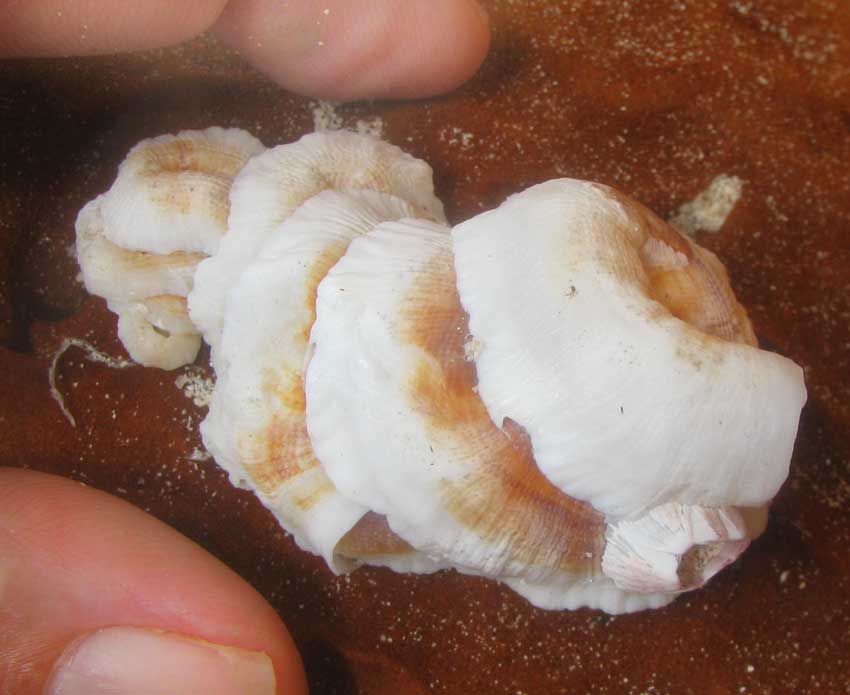Excerpts from Jim Conrad's
Naturalist Newsletter

from the September 18, 2011 Newsletter issued from Mayan Beach Garden Inn 20 kms north of Mahahual; Caribbean coastal beach and mangroves, ~N18.89°, ~W87.64°, Quintana Roo state, MÉXICO
WORM SNAIL TUBE ON FLOTSAM
The other day a ham-size chunk of what I guess was expansion foam that had served as insulation between a boat's double hulls floated onto the beach. An animal's curled, cylindrical shell was attached to the foam. It was a lot like the worm tubes we saw inside a thorny oyster shell last week, but much larger. You can see the curling shell sticking to the foam above. Another shot, from the front, showing a "false opening" at the side and what looks like a barnacle shell at the bottom left of the main hole is shown below:

Volunteer identifier Bea in Ontario and I worked together on this but it took Bea to come up with the name EUALETES TULIPA, which is a sea snail, a marine gastropod mollusk in the family Vermetidae. Sea snails also sometimes are known as worm snails. Remember that last week's worm tubes were formed by segmented worms, like earthworms. What we have here is a mollusk, like snails and slugs -- a whole different phylum, phyla being like the phylum of animals with spinal columns (the chordates), the phylum of arthropods, the phylum of sponges, etc.
Lots of shells are similar to ours so we're not absolutely certain about the ID. However, Eualetes tulipa looks just like this, occurs in this part of the world, is known to attach to artificial substrates, and in some waters is considered an invasive species, so Eualetes tulipa is a good educated guess.
There's not much information available about Eualetes tulipa. However, now the world knows that it can ride on hardened expansion foam transported by ocean currents.